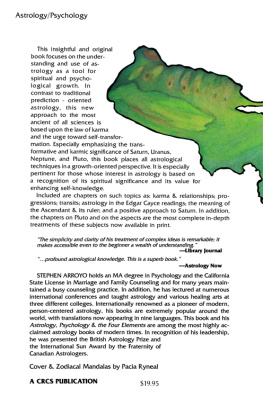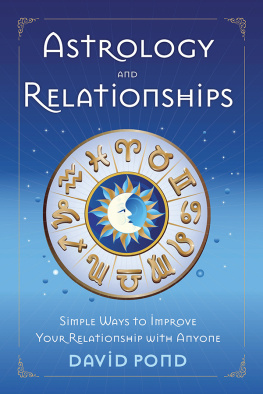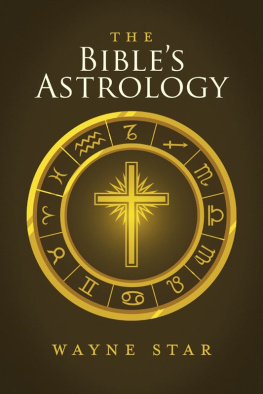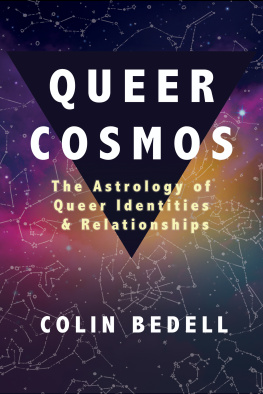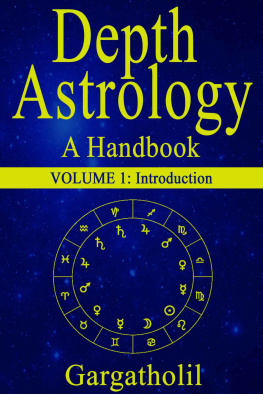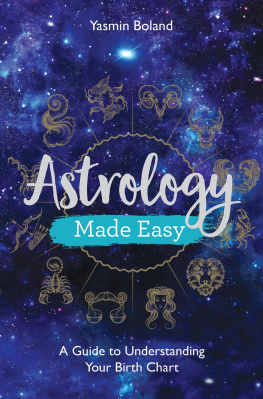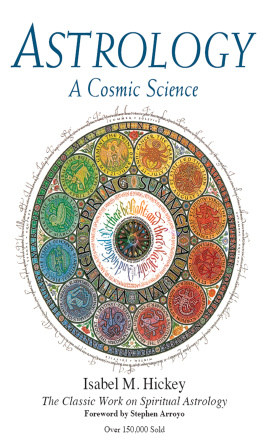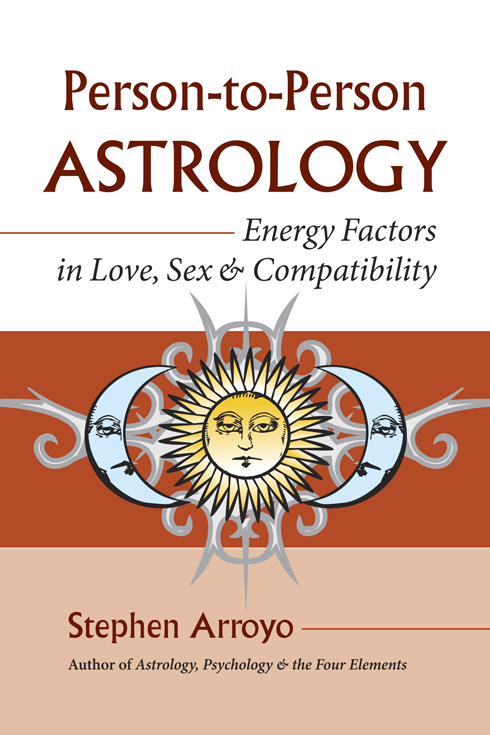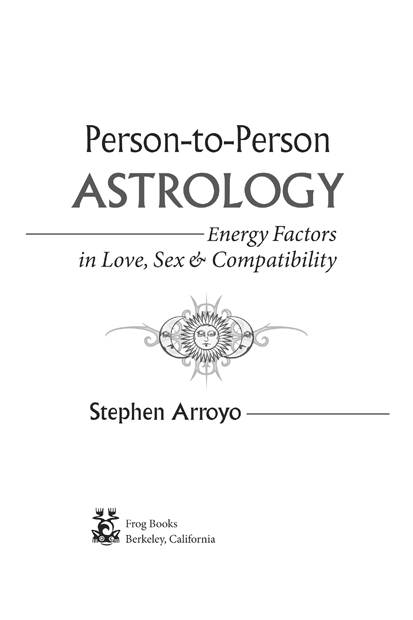Copyright 2007 by Stephen Arroyo. All rights reserved. No portion of this book, except for brief review, may be reproduced, stored in a retrieval system, or transmitted in any form or by any meanselectronic, mechanical, photocopying, recording, or otherwisewithout written permission of the publisher. For information contact Frog Books c/o North Atlantic Books.
Arroyo, Stephen.
Person-to-person astrology : energy factors in love, sex, and compatibility / Stephen Arroyo.
p. cm.
Includes bibliographical references.
1. Astrology. I. Title.
BF1708.1.A785 2007
133.5863067dc22
Dedication
To all the hundreds of people who contributed to this two-decade project, through suggestions, letters, questionnaire responses, or trusting openness in consultations or interviews. And also to the future generations, including Isaac, Rose, Ginger, and Lucas, in the hope that they will look unflinchingly at what astrology can offer them to improve their understanding of themselves and others.
Acknowledgments
My greatest thanks go to Aina Kemanis, without whose encouragement, support, wide-ranging dialogues, research, editorial refinements, and an occasional gentle push, this book would never have been completed. Also many thanks to Barbara Boyd, who proved to be the perfect editor for a specialized author writing a book for a broader public. Her combination of acute perception, superb language skills, humor, and penetrating criticism combined with tact made hours of editing work more fun than tedious. And also much gratitude to many others for their encouragement and intellectual support, and to Kathy Mullins and Jim Feil for helping make lengthy focused writing times possible.
Contents
Venus and Mars in the Water Element
(Cancer, Scorpio, and Pisces)
Venus and Mars in the Fire Element
(Aries, Leo, and Sagittarius)
Venus and Mars in the Earth Element
(Taurus, Virgo, and Capricorn)
Venus and Mars in the Air Element
(Gemini, Libra, and Aquarius)
Preface
It is better to stir up a question without deciding it, than to decide it without stirring it up.
Joseph Joubert, French philosopher and author of Penses
In 1980 I published a book, Relationships & Life Cycles, in which I identified Mars as symbolic of the male ego and Venus as representative of the female ego. This was twelve years before John Gray published his best-selling book Men Are from Mars, Women Are from Venus, the basic ideas for which he derived in part from astrology. As John Gray acknowledged in his foreword to another book in 1997 (Amy Keehns Love and War Between the Signs):
My awareness of men and women having both Martian and Venusian characteristics was directly influenced by my knowledge of the ancient practice of astrology. I knew that being male or female was not the only factor determining ones needs and actions. I came to realize that we have to take into consideration the effect of astrology and the influence of all twelve signs. (p. xi)
The broad popularity of Grays book revealed how much a wide variety of people, of many levels of education, recognize the value of such useful concepts and the powerful archetypal symbolism of Mars and Venus. The continuing popularity of that book and various sequels proves that these planetary psychological concepts and symbols help clarify peoples sexual identities, emotional needs, unconscious motivations, and relationship dynamics.
This present book is far more comprehensive than my earlier work and is based on far more extensive research, as well as twenty-five years of additional experience. This book also includes direct quotations from hundreds of questionnaires and personal interviews. In addition, it is written primarily for a general audience who may have no previous knowledge of astrology or only a passing familiarity with the basic meanings of the Sun signs.
When my first book, Astrology, Psychology and the Four Elements: An Energy Approach to Astrology & Its Use in the Counseling Arts was published in 1976, it became the first to describe and define astrology as a modern, accessible, precise language of energy, a central theme of this book as well. Since that time, thousands of books and research reports in psychology, the healing arts, new physics, and other fields have been published that establish the theoretical and practical reality of the viewpoint that life is understandable as interrelations and interactions of energy fields. As Lynne McTaggart writes in her acclaimed book The Field, our understanding of how our world and our bodies work and also of how we define ourselves is being radically changed by the gathering evidence supporting this new view of life.
Human beings and all living things are a coalescence of energy in a field of energy connected to every other thing in the world. There is no me and not-me duality to our bodies in relation to the universe, but one underlying energy field. (TF, p. xv)
All of my life I have had a natural tendency to question and often challenge the established orthodoxy in whatever field of interest my life pilgrimage took me. I have chosen the quotation by Joseph Joubert at the beginning of this Preface to set the tone and to clarify the scope of this book. At various places in this work I question or challenge various social, scientific, or academic trends or assumptions, and I also strongly dismiss or at least contradict some of the common beliefs or current fads in psychology, in education, and also in traditional astrology. The reader should assume thatin the spirit of Jouberts quotationI am doing so not so much to declare a conclusion or a fully formulated alternative view or theory, but more importantly to make us think in a new way and ideally to encourage all of us to look more broadly at many issues. As a great spiritual teacher once said when first visiting the USA, provincialism and rigidity of mind are great obstacles to real understanding and personal growth. And in order to further this broadening of vision, I make use of a particularly wide-ranging assortment of quotations from dozens of insightful people, some of whom are at the cutting edge of new developments and new models for human nature and behavior. No matter how the reader initially reacts to some of the views expressed herein, my main hope is that this book is overall a stimulating and thoughtful journey.


